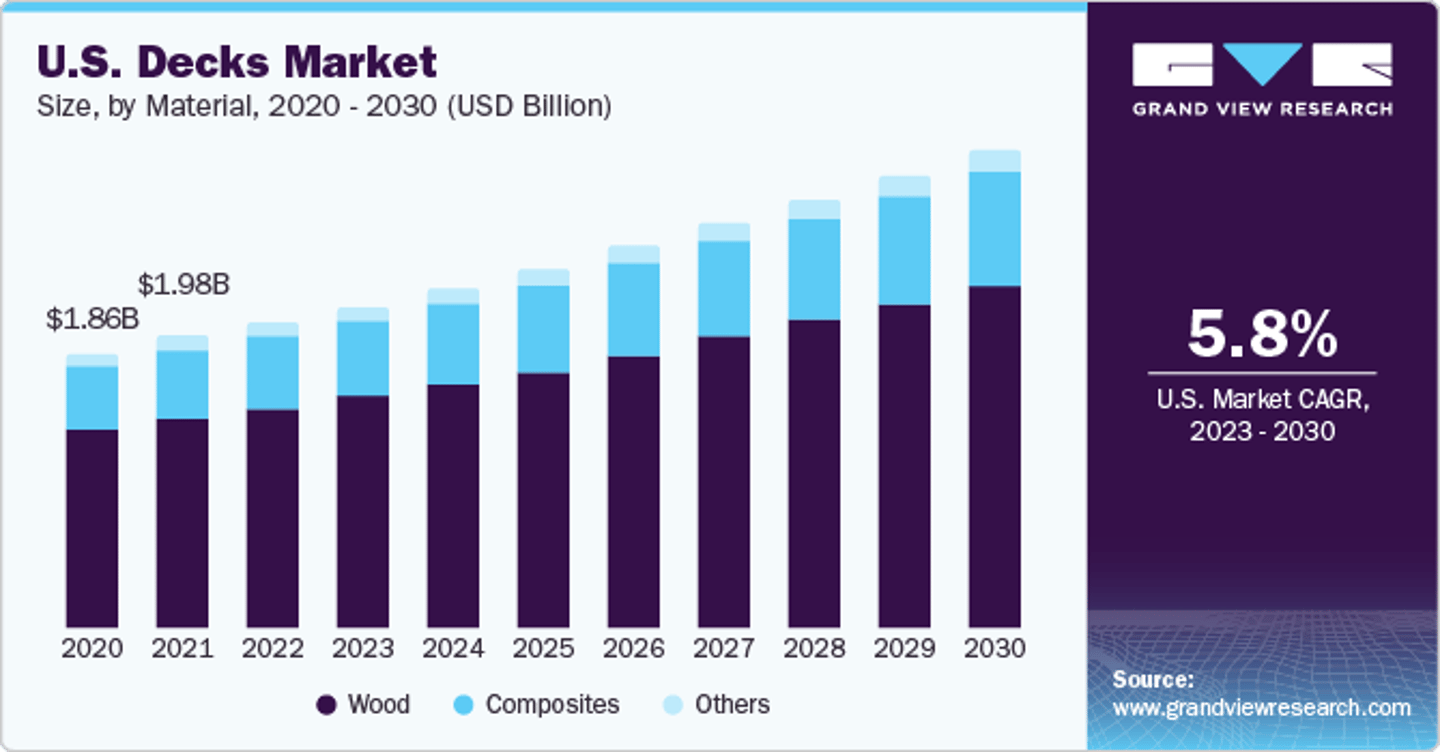Decking outlook, predictions and trends
A nice, sturdy deck has become part of the American Dream. In fact, according to an analysis compiled by Grand View Research, the North America decking market size was recently estimated at $4.1 billion, and the decking market is forecasted to grow at a compound annual growth rate (CAGR) of 5.7% from 2023 to 2030. At that rate the industry could be worth $6.35 billion by 2030.
But where is the opportunity and growth to be found in this increasingly splintered market? For starters, the future of composite and non-wood decking certainly seems bright.
Also contributing to growth, according to Grand View Research, is “increasing awareness about building aesthetics among regional consumers” and “increasing public and private investments in the development of new infrastructures, residential spaces and commercial spaces.” Despite slowed momentum in U.S. housing starts, building permits and housing completions, there is still plenty of building and beautification being done if you know where to look. According to Grand View Research, demand in coming years may be skewed more toward building at places like hotels, resorts, parks and marinas rather than private residences. The decking work at homes will be more so renovations than fresh construction, which makes sense considering the deck-building bonanza that occurred during the pandemic.
Demand for decking could soar just beyond our borders, too. The research points to Canada and Mexico as emerging markets in particular. As residential and commercial construction continue to rise in both countries, decking demand could (and should) surge in coming years.
Insights on materials, pricing and more
Wood still dominates the decking world (with a revenue share of over 71%), per the research. However, non-wood decking seems poised to rise in popularity, with one estimate predicting the composite decking market to exceed $12.6 billion by 2031 (up from just $3.8 billion in 2023).
As homeowners lean toward more eco-conscious options, the residential sector could fuel composite demand. According to the research: “Decks are increasingly being viewed as extensions of the living area, and homeowners creating functional and aesthetically pleasing outdoor environments is driving the existing home segment. This has led to a surge in the use of durable and low-maintenance materials for deck construction such as composite decking and metal railings. Moreover, the shift in how decks are constructed, focusing on durability, and their ease of maintenance, has a profound impact on the aesthetics and value of existing homes, thereby fueling the demand in existing homes.”
As composite decking technology improves and competition increases, prices should come down in coming years. That goes for wood, too. “Through 2027, the average price of decking is expected to decline 2.0% per year to $3.30 per lineal foot due to sizable drops in the prices of southern yellow pine lumber, cedar, and redwood as shortages have ceased and supply chain issues have resolved themselves.”





